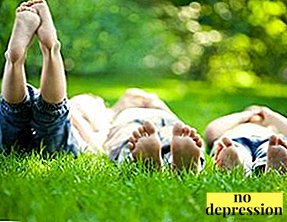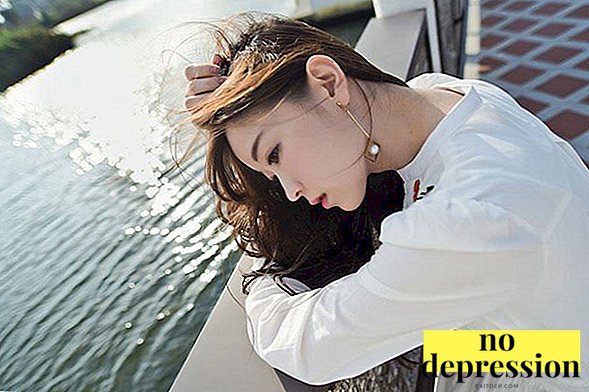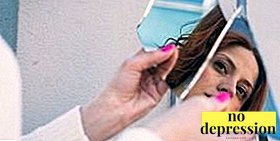Green is most common in nature: the vast majority of terrestrial and aquatic plants are colored in various shades of green.
Green color in psychology personifies youth, calm, happiness and life in general.
What does psychology mean?

Abundance of green in nature the world owes chlorophyll: a special pigment that is found in the stems and leaves of most plants.
Thanks to him, they can independently produce for themselves nutrients: chlorophyll takes a key part in a process called photosynthesis.
Green is, along with blue, yellow and red, one of the primary colors, the various combinations of which make it possible to get countless additional colors.
The green color has many shades, and the most famous of them - lime, turquoise, olive, chartreuse, aquamarine.
Interesting information about the green color:
- According to a large-scale study conducted in England, the shade called Marrs Green was recognized as the most attractive color. It is a neutral shade of green, mixed with a bit of blue.
- Orthodox Christianity considers green as a symbol of infinite life.
- Green in Islamic beliefs is the sacred color, the embodiment of life and Paradise. It is often found on the flags of many Muslim countries, such as Saudi Arabia, Mauritania, Algeria, Pakistan.
- Green is considered a symbol of Ireland and the day of St. Patrick. Leprechaun - a famous character of the Irish folklore and one of the symbols of this country - is traditionally depicted in green clothes. Another symbol of Ireland is the green leaf of clover.
- Various environmental movements usually choose green for flags and logos.
What does green mean? Find out about this from the video:
What does symbolize?

Green color has long symbolized joy, happiness, youth and childhood, warmth, carelessness, prosperity, calm, balance, wisdom, growth and development, fun and hope, spring and summer.
For people, the green color has always been inextricably linked with the harvest, agriculture, and gardening.
Currently, this color is rarely associated with something negative.
However, several centuries ago, in certain regions, green was associated with demons, sorcerers, devils, and small evil spirits, for example, with water ones.
According to beliefs, green eyes are a sure sign of a witch.
What is associated with?
Main association with green, which will occur in any person - plants, leaves of trees and flowers, berries, vegetables and fruits (green grapes, lime, cucumber, avocado, green varieties of apples).
Some reptiles and birds also have a green color. Among reptiles and amphibians there are frogs, some lizards and snakes, toads, crocodiles, monitor lizards.

Among birds with green plumage, green organists, parrots, European bee-eater, and some species of pigeons can boast.
Psychologists have different attitudes to different shades of green.
For example, lime color it is associated not only with green, but also with yellow, therefore it partially adopts its characteristics.
If it is green enough in light green, it looks cooler and softer, therefore it affects people more likely to be soothing rather than exciting.
In psychology, green is considered mostly positive color, even its dark shades rarely cause pronounced negative, because in all its manifestations it has a close association with nature, which people encounter daily.
Green magic:
Purpose of use in advertising
Green color is actively used in the advertising of organic matter and food in general, because it is associated with buyers with freshness, naturalness, closeness to nature.
A variety of stickers and inscriptions that include words "eco" and "Bio", also usually made using green color.

Since the package must display the contents, the green color can be used in the development of packages for products containing vegetables, fruits, or berries colored in it.
Also green is good for advertising. medication, private hospitals, including veterinary clinics, and pharmacies, as associated with health and youth.
Impact on the psyche
Different shades of green have a different effect on the well-being of a person.
In general, green can be attributed to soothing, relaxing colors, but bright, rich shades of it, for example, lime, can, on the contrary, have a soft invigorating effect, give energy.
Features of the effect of green color on well-being:
- Green color is extremely positive effect on the human psyche. It helps to deal with a whole range of problems: phobias, depression, anxiety disorders and neuroses.
 It can also increase stress tolerance, “cool down” aggressive and hot-tempered people, give strength to those who feel tired and overwhelmed, raise their spirits, increase concentration and work capacity. It is pleasant and easy to fall asleep in a room whose walls are painted in neutral green.
It can also increase stress tolerance, “cool down” aggressive and hot-tempered people, give strength to those who feel tired and overwhelmed, raise their spirits, increase concentration and work capacity. It is pleasant and easy to fall asleep in a room whose walls are painted in neutral green. - Studies have shown that people in a room with an abundance of green objects, feel comfortable, warm and cozy. Even a small number of green objects are able to refresh the room and have a positive effect on the well-being of people staying in it.
- It helps faster get rid of negative emotions and mitigates the severity of mood swings in people with mental illnesses.
- This color, according to the color therapists, reduces pain, accelerates the process of treating infectious diseases, normalizes blood pressure and heart rate, lowers body temperature, improves the functioning of most organs and systems.
Most of its influence on the organs of vision, bone and muscle systems, gastrointestinal tract, pituitary, respiratory system.
- It has a positive effect on the process of developing love feelings, helps the beloved to be more judicious and attentive to each other.
Who needs to paint the room green? Color in interior design:
Pulls on green: what does this mean?

Green color about 15% of people find attractiveliving in the western countries of the world, and about the same percentage of people find it repulsive, associated with superstitions.
There is some connection between the color preferences and the character of the people, so information about the favorite colors of the new acquaintance may be useful.
But overly serious about performance should not be: each person is unique, and it is best to get to know others in the process of close communication, and not with the help of average character descriptions.
MenGreens that are attractive are usually the following traits:
- Equilibrium. Men who choose green, it is difficult to ruffle. They are able to maintain composure in almost all situations. Aggressiveness and temper is not about them.
- Good humor They can be called kind-hearted or at least benevolent, bright people who try to help others as much as they can. They often smile, and their empathy is also well developed.
- The desire to care. Men who love green become beautiful husbands and fathers. They take care of those who are dear to them, and do everything possible to ensure that their loved ones are happy and happy.
- Diligence and perseverance. These men show good performance, they are stubborn and attentive to detail, but not so strong that they can be called perfectionists.
- Sociability. Of course, men who choose green are not as sociable as those who love red, yellow or orange, but they love communication and know how to evoke positive emotions in people.
- Optimism. They encounter life troubles with a smile and often resort to self-irony in order to maintain calm and confidence even in the most difficult situations.

Womenwho find green attractive, more often than others put family and close circle in priority, rather than work and career.
They are friendly, love to make new acquaintances, have a strong mental and physical health, often choose sports, dancing or yoga as a hobby.
They have the following features:
- Empathicity. In women, empathy and emotional intelligence are generally more developed than in men, so they often offer their emotional support to other people, they know how to give good advice. They make excellent psychologists and psychotherapists.
- Patience. Like men, these women are able to control emotions for a long time, they are not prone to hysterics and sudden mood swings. Developed empathy helps them to better understand the feelings and experiences of others, and when you understand why a person behaves in a certain way, it is easier to endure and find the right words.
- Politeness. They are smiling and attentive, respectful of people around them and do everything possible not to cause them discomfort without good reason.
Also people who prefer green are different reasonableness and are able to maintain a balance of emotions and mind.
If a person does not like it: what does it mean?

Green color do not like people who have the following character traits:
- increased anxiety, fear of difficulties;
- isolation, uncommunicability;
- desire to be different from other people.
Such people don't like noisy companies and prefer a relaxing holiday with your closest friends.
Who is suitable?
This color can be called universal: if you choose the right color combinations, it will look appropriate at the party and at the interview.
However, serious events are not recommended to wear things painted in bright green and lime shades: you can create the impression of a frivolous person.
Green color in the interior is perfect for people who appreciate peace of mind and want to feel as comfortable as possible. Neutral green shades are well suited for bedroom decoration.
It can be successfully combined with different shades of brown and blue, with white, black, yellow, orange.
How to combine green color in clothes? Stylist tips:
Negative features

People who love green, inherent in the following negative traits:
- excessive craving for conservatism, stability;
- selfishness;
- jealousy.
Some people have green color overly soothingtherefore, their performance decreases, they become more passive.
But this feature is not very common. Otherwise, the green color causes mostly positive associations and helps people feel better.

 It can also increase stress tolerance, “cool down” aggressive and hot-tempered people, give strength to those who feel tired and overwhelmed, raise their spirits, increase concentration and work capacity. It is pleasant and easy to fall asleep in a room whose walls are painted in neutral green.
It can also increase stress tolerance, “cool down” aggressive and hot-tempered people, give strength to those who feel tired and overwhelmed, raise their spirits, increase concentration and work capacity. It is pleasant and easy to fall asleep in a room whose walls are painted in neutral green.

